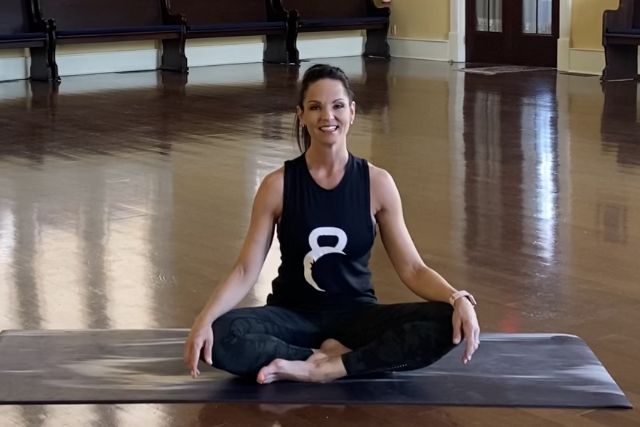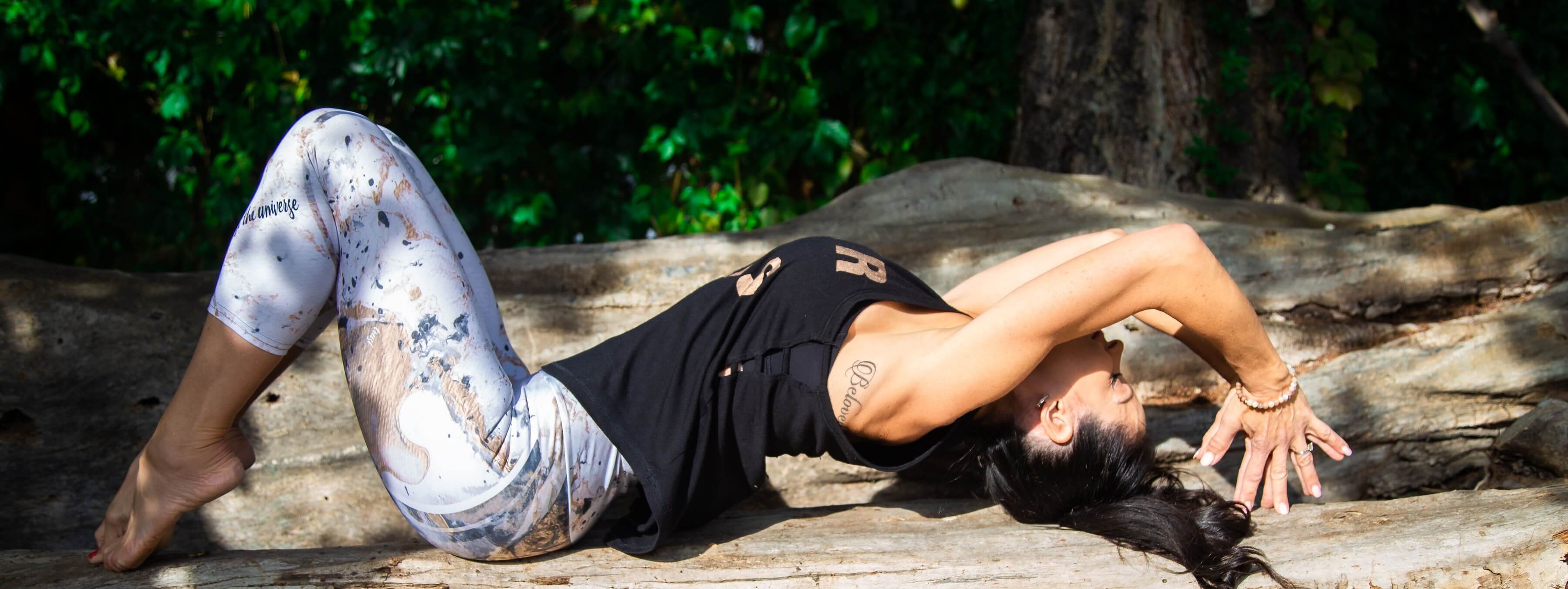Six Yoga Poses to Start Your Day

Long before I became a Fitness Trainer and Yoga Instructor here in Kamloops, BC, I was wary of yoga. It sounded like a slow and boring movement practice that was deeply rooted in a religion that wasn’t mine. Little did I know that because of my reticence to try yoga, I was missing out on many amazing benefits that I no longer wish to live without.
If you are similarly wary of trying yoga but already understand the benefit your body receives by stretching its many muscles, try these six simple yoga poses at the beginning (and end!) of your day. You will likely be surprised at how much value you get: more energy, an easier transition to your workday, decreased stiffness, increased energy, improved mood, reduction of stress and an overall better outlook on life!
Although you may find it is enough at first to simply work your way through each yoga pose, I encourage you to try and incorporate a deep and slow breathing pattern while moving through each stretch. Inhale through the nostrils while entering a pose, lengthening, or opening up the front side of the body; exhale while exiting a pose, compressing, or folding into the front side of the body. You may wish to watch each demo first if not used to pairing breath and movement, or simply do each yoga stretch along with me by clicking on the following link:
1. Single Wind Relieving (Ardha Pavanamuktasana)
While lying supine (yes, you can even do this in bed),inhale and gently bring one knee in towards your chest. Interlace your hands on top of the knee and while exhaling, draw the knee in as close as is comfortable to stretch and strengthen your hips and lower back. Stay for several rounds of breath, then release the leg and repeat on the other leg.
This pose also gently massages the abdomen and internal organs, often relieving gas pains (thus the name!)
Avoid this yoga pose if you have had abdominal surgery, are pregnant, have a hernia or piles.
2. Double Wind Relieving (Apanasana)
Naturally following Single Wind Relieving is Double Wind Relieving: simply inhale, bring both knees in towards the chest and exhale as you deepen the gentle pull with hands clasped atop the knees or shins.
This yoga pose also strengthens the back and hips, and will help bring relief to tired legs and sore joints. Once again you will receive a gentle internal massage which increases blood flow and helps to relieve any gastrointestinal pain or gas.
3. Sphinx (Salamba Bhujangasana)
Lie on your belly, propping yourself up on your forearms, keeping your elbows close to your body. Plant palms face down with fingers spread wide. Lengthen up through the crown of your head without looking up; try to keep your neck and spine in alignment (so perhaps looking a few inches in front of your mat). Encourage your shoulders to stay open and breathe deeply.
This asana strengthens the spine, opens up the lower back and counteracts a hunched posture. It also tones the glutes and helps to support pelvis and hips.
Avoid doing Sphinx pose if you are pregnant, have fractured wrist or ribs, or have recently had abdominal surgery.
4. Child’s Pose (Balasana)
A favourite of many, Child’s Pose is a super therapeutic posture that has many benefits. There are 2 main versions: both involve starting on all fours, placing the big toes together, allowing the hips to settle back over top of the heels and sinking down until the forehead meets the floor and the body relaxes with a rounded spine.
You can choose to either keep your knees together (narrow child’s pose) or widen them roughly the width of your yoga mat (wide-kneed child’s pose). Narrow Child’s Pose is used more for relieving tension in the back whereas Wide-Kneed Child’s Pose is more for opening up the hips.
Arms are usually extended straight above the head resting on the mat, but can also be placed by one’s side or down alongside one’s legs, depending on flexibility, comfort and desired effects.
Some of the benefits you will receive from this yoga pose are:
• Helps to normalize breath and blood flow in the body
• Lengthens and stretches the spine
• Calms a busy brain and soothes anxiety
• Helps to alleviate back and neck pain
• Relieves tension in shoulders, neck and chest
• Helps with dizziness and fatigue
• Stretches ankles, hips and thighs
5. Cat Cow (Bitilasana Marjaryasana)
As expected, this flowing movement is made up of two yoga poses: Cat and Cow. You will flow from one to the other, and will receive a great many benefits, as it opens up the spine, strengthens arms and shoulders, increases neck flexibility, improves posture, helps prevent insomnia, brings some relief to menstruating women and massages the internal organs.
Get onto all fours, aligning your knees under your hips and your wrists under your shoulders. Relax your shoulders (draw them away from your ears) and look down at the floor or mat between your hands. As you slowly inhale through the nostrils, begin to lift your chin and tailbone, creating an arch in the back like a sway-back cow. Then, as you release the breath through your nostrils, gently pull your navel in as you slowly draw the chin towards the chest and tuck the tailbone under until the shoulders are rounded and the back is arched like a Halloween cat. Ripple through these 3 poses, pairing the moves with your breath for 5 – 10 rounds.
If you have a back injury or are pregnant, stick to just performing Cow Pose.
6. Downward Facing Dog (Adho Mukha Savasana)
From your tabletop position (being on all 4’s),slide your hands up the mat (forward on the floor) a few inches. Make sure the hands are shoulder distance apart and the feet are hip distance apart. Spread your fingers wide and tuck your toes under. Take a big breath in and then, as you exhale, lift your hips high to the sky. Your head should hang between you biceps and your body should make an upside-down V shape. Bend into your knees as much as you need to be comfortable. Breathe deeply, press into all 10 fingertips to take a bit of pressure of your wrists and hold for 3-5 full cycles of breath.
Downward Facing Dog stretches quads, hamstrings, calves, hips and back muscles. It also strengthens wrists, hands, arms, shoulders, chest and feet. Downdog increases blood flow, builds up bone density, improves your posture and alleviates back pain. It is really a wonderful, full-body classic yoga stretch that will energize you for your day; however, if you are in late-term pregnancy, have severe carpel tunnel syndrome or have high blood pressure, you should avoid this posture.
Enjoy your new routine of spending even just a few minutes in each yoga pose. Both your mind and body will thank you!
If you would like personalized training with your yoga poses, check out my private yoga classes!

